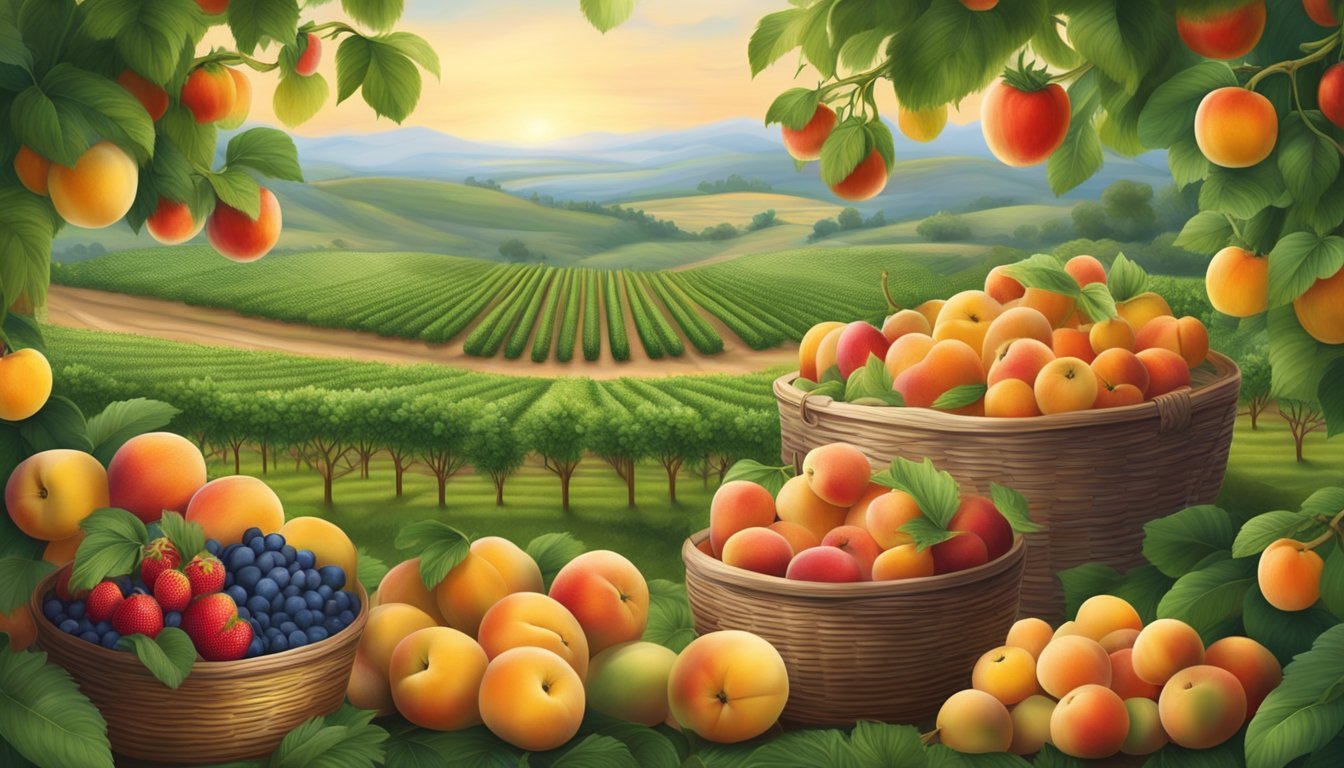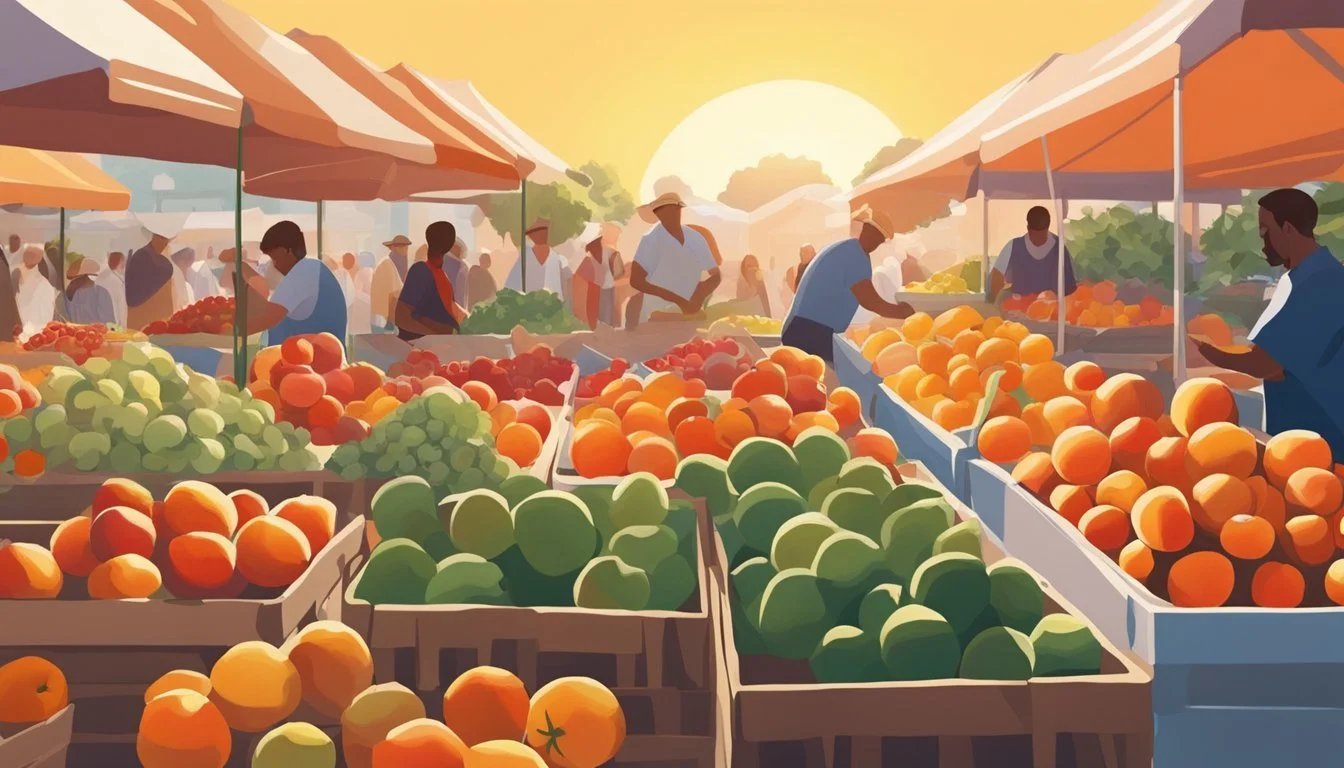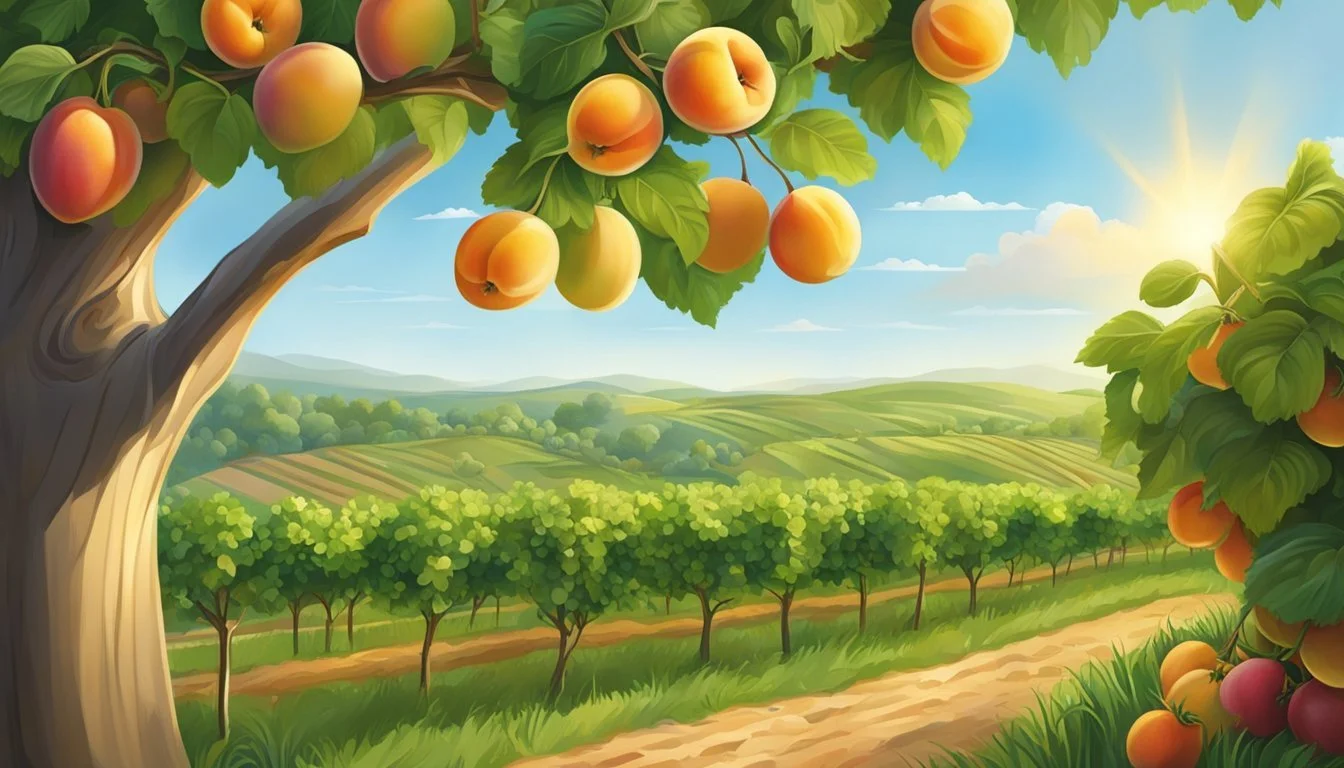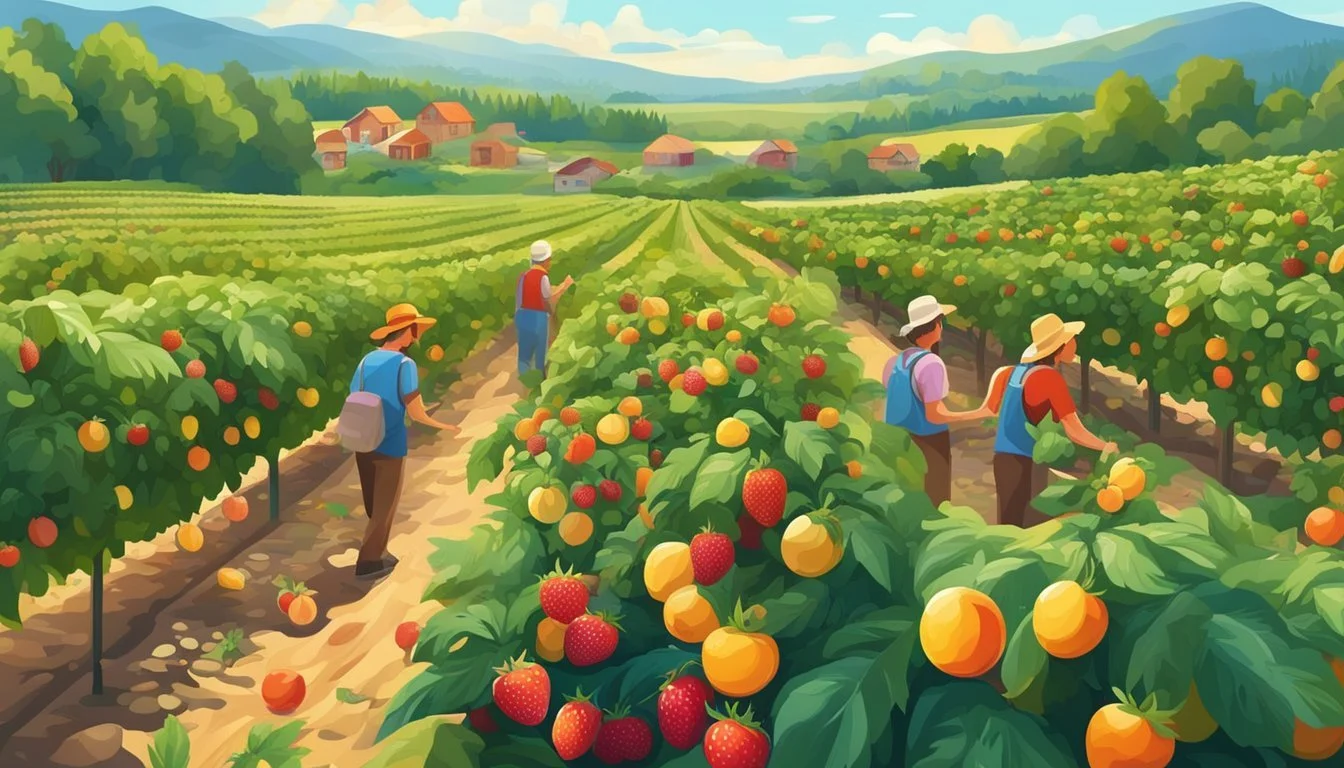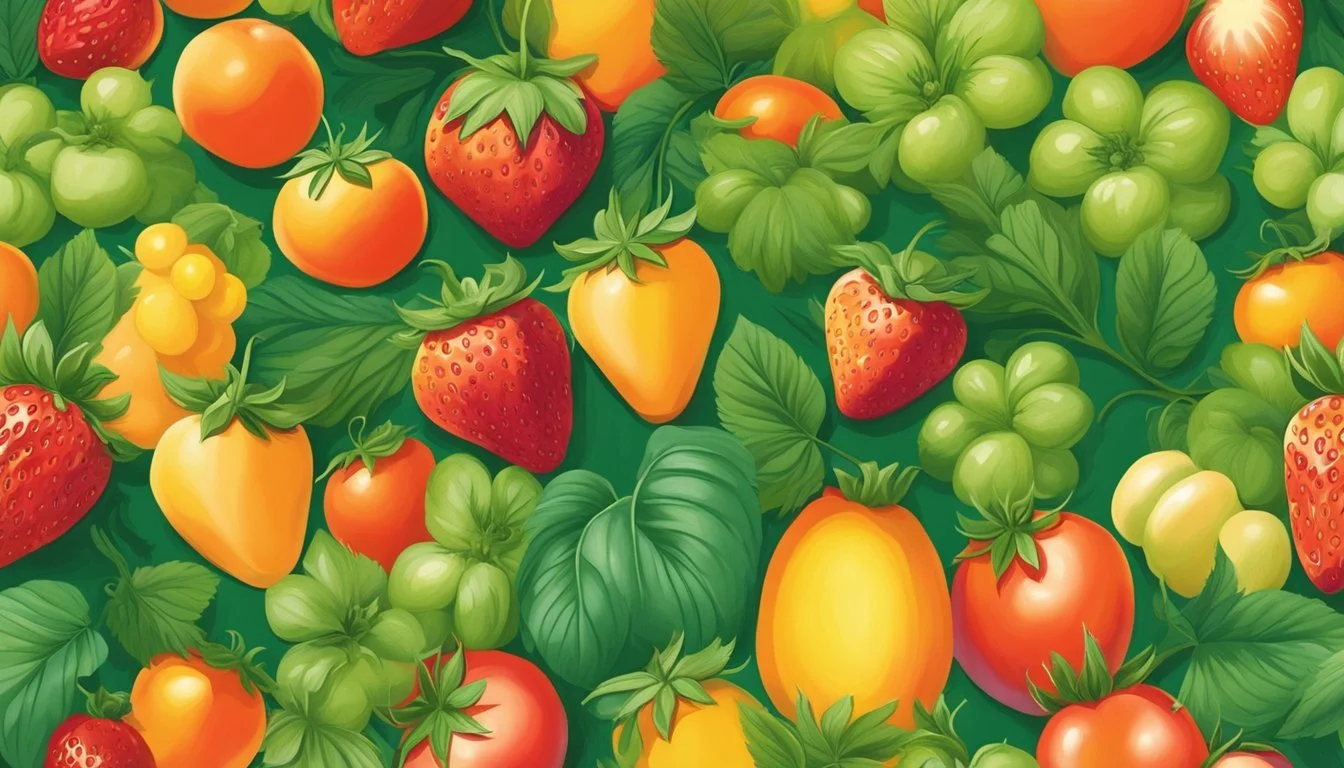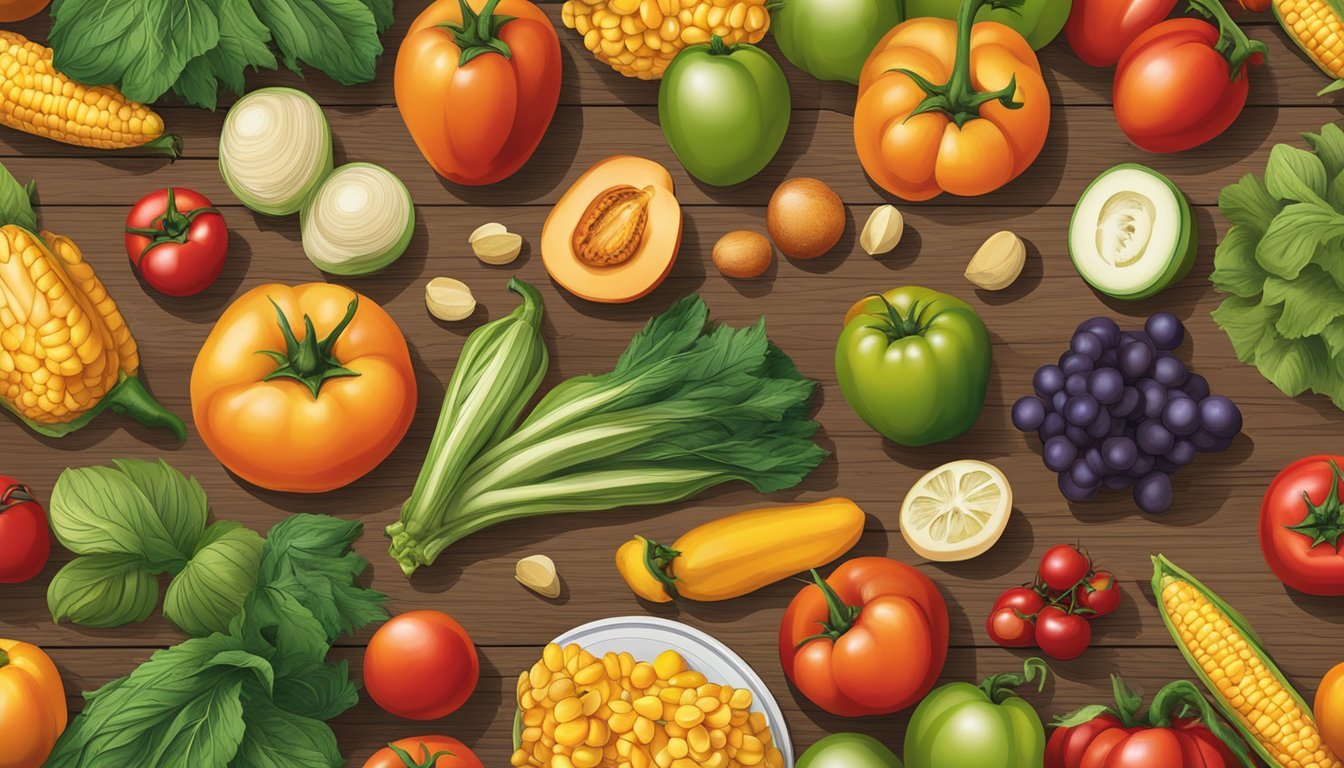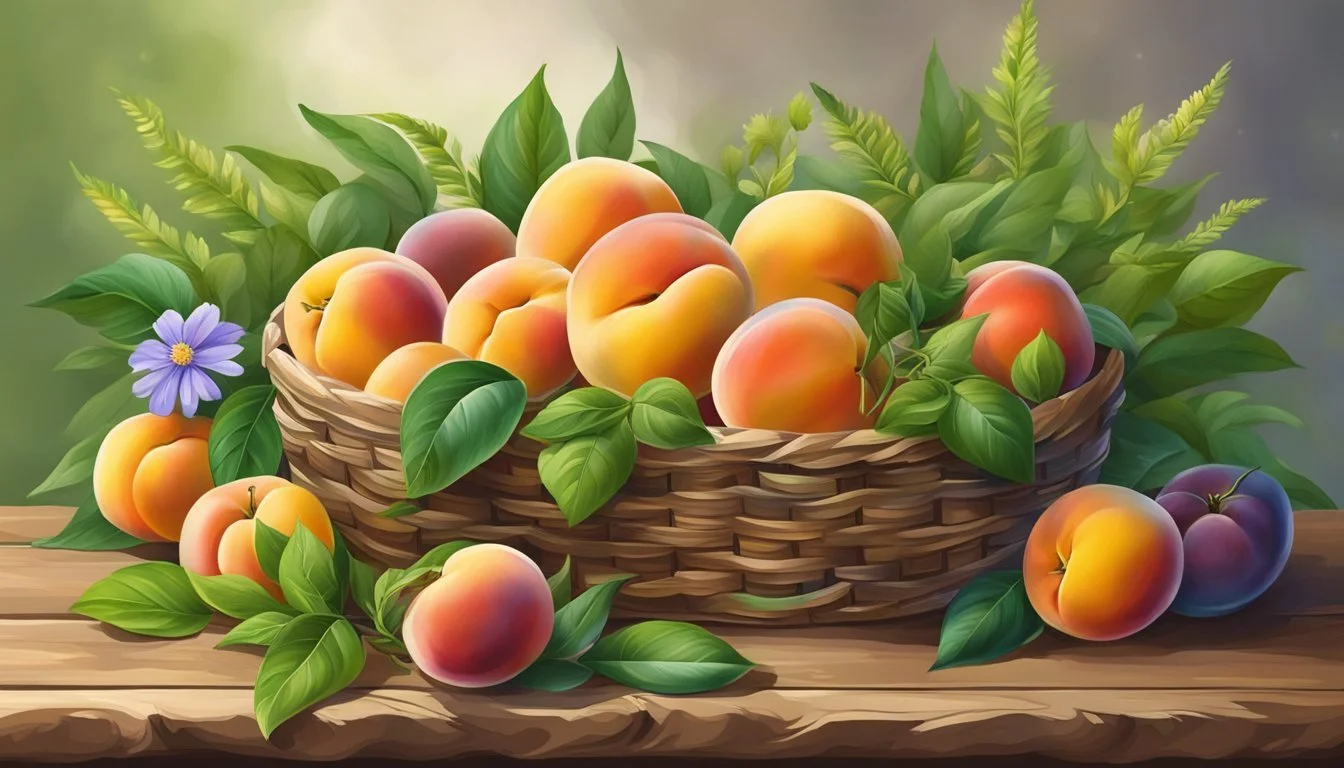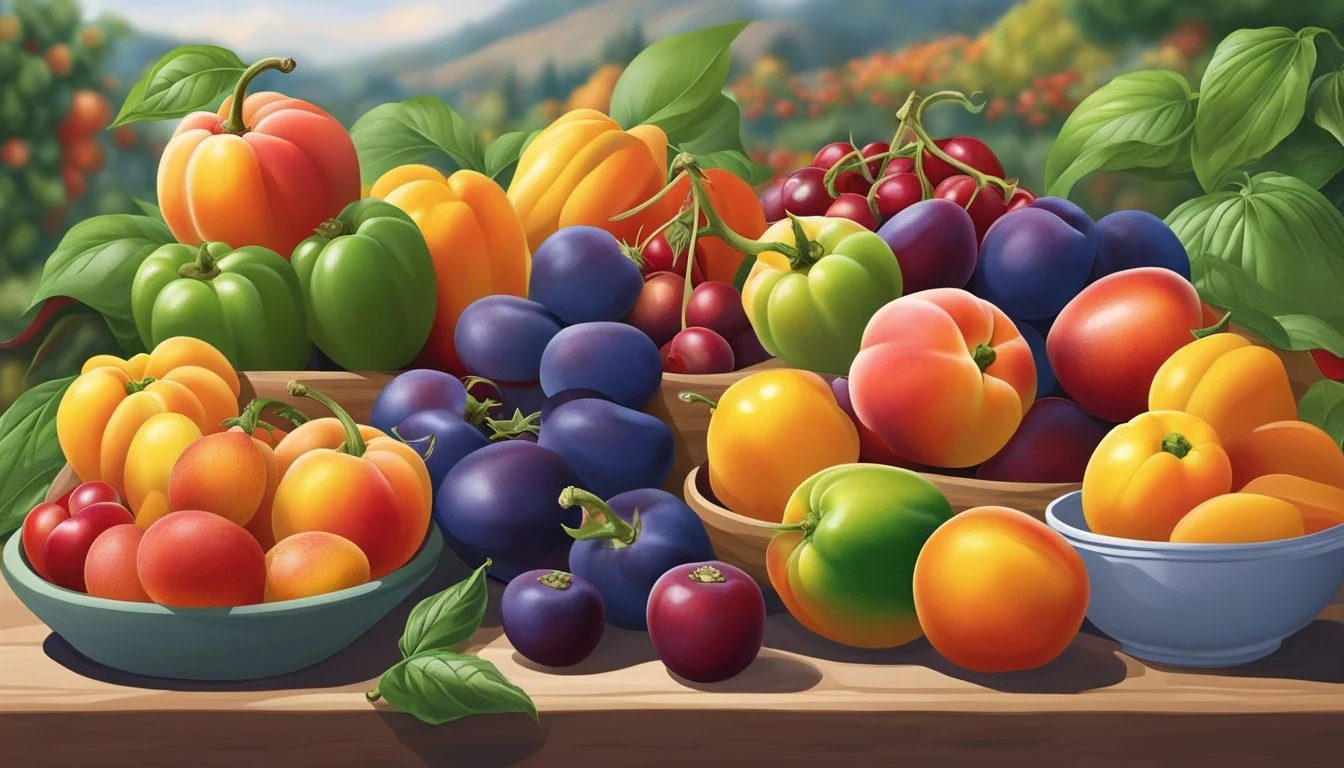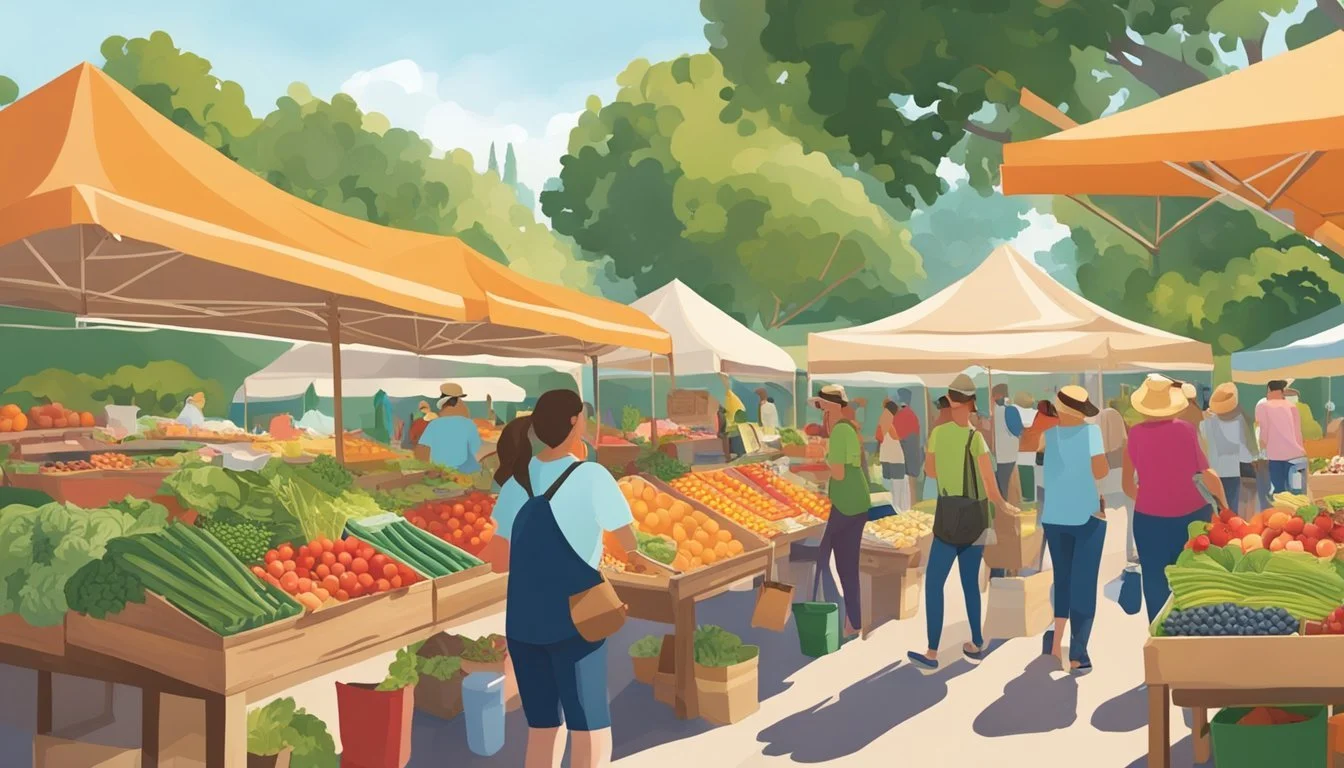California Seasonal Fruit & Vegetables in July
Your Guide to Fresh Produce
This Article is Part of our California Seasonal Fruit & Veg Calendar
July in California is a thriving time for a diverse array of produce. During this peak summer month, the state's agricultural abundance is especially apparent, with a variety of fruits (What wine goes well with fruit?) and vegetables reaching their optimal ripeness. Understanding the seasonal availability of produce not only supports local farmers but also ensures that consumers enjoy the freshest and most flavorful produce.
Seasonal produce in California during July includes a remarkable selection of fruits such as strawberries, which are best harvested from March through July. Cherries (how long do cherries last?), another summer favorite, are also ripe for picking up until the end of July. These fruits, alongside other seasonal offerings, exemplify the quality and variety available during California's summer months.
Vegetables are not to be overlooked, as the warm weather supports the successful cultivation of many crops. Shoppers can find fields laden with vibrant and nutrient-rich vegetables. Markets brim with fresh picks, making it an opportune time for consumers to explore the rich tapestry of local produce. This period marks an excellent opportunity for individuals to engage with a farm-to-table lifestyle, ensuring meals are both delicious and seasonally appropriate.
Understanding Seasonality
In the realm of agriculture, "seasonality" refers to the time of year when fruits and vegetables reach their peak in flavor and nutritional value, and are typically harvested. The concept stems from the natural growth cycles of plants, which are influenced by factors like weather, soil type, and daylight hours.
During the summer months, specifically July in California, a wide array of produce is at its peak and readily available. This is when growing conditions are ideal for many crops, with longer daylight hours and warmer temperatures. Consumers can expect to find an abundance of fruits and vegetables that are not only fresh but also richer in flavor and nutrients compared to those grown out of season.
The table below highlights a selection of fruits and vegetables that are in season in California during the summer, with a focus on the month of July:
Fruits in Season Vegetables in Season Strawberries Asparagus Cherries Avocados Apricots Tomatoes Peaches Sweet Corn Melons Bell Peppers
Understanding and utilizing seasonality can lead to more sustainable eating practices and support local economies. Consumers benefit from the fresher produce, while producers align their cultivation practices with the natural cycles, resulting in potential environmental benefits, such as reduced greenhouse gas emissions from transportation and storage. By embracing seasonality, one partakes in a cycle of growth that supports both local agriculture and the natural world.
Selecting Quality Produce
When selecting stone fruits like apricots, shoppers should look for those with a vibrant golden hue, indicating ripeness. Firmness should be consistent, with a slight give when pressed gently, signifying a juicy interior.
Table for Ripeness Indicators:
Fruit Ripeness Indicators Apricots Golden color, slight give to touch Cherries Deep, uniform color, firm texture Strawberries Bright red color, aromatic scent
For strawberries, which peak from March through July, one should choose vibrant red berries with a full, leafy green cap. Berries should emit a sweet fragrance, an accurate guide to quality.
Consistently, cherries harvested from May to July should possess a deep, almost uniform color with a firm texture. Avoid those with visible bruising or blemishes.
For all produce, the product's scent is an often-overlooked aspect; a ripe, ready-to-eat fruit will have a pronounced and pleasant aroma. Following a reliable seasonal guide ensures not only peak freshness but also optimal flavor and nutritional benefits.
In Southern California, produce varies slightly compared to other regions. For example, the Los Angeles area often has a wider range of ripeness due to microclimates. Consumers may refer to local charts to adjust expectations accordingly.
By adhering to these indicators, individuals can confidently select the best seasonal fruit the Golden State offers.
California's Climatic Influence
California's climate plays a pivotal role in the cultivation of a wide array of seasonal fruits and vegetables available in July. The state's diverse geographic and climatic zones allow for the thriving of different crops, especially in the summer months when conditions are most favorable.
Southern California, renowned for its warm, Mediterranean-like climate, fosters the growth of summer fruits such as avocados and citrus, alongside a variety of green vegetables. The consistent sunshine and minimal rainfall create an ideal environment for these crops to flourish.
In contrast, the coastal areas provide a cooler and more temperate climate that benefits crops like strawberries and leafy greens, which prefer milder summer temperatures. The state's climate, with its distinct regional variations, contributes to the unique agricultural tapestry of California.
Furthermore, farmers across California must adapt to climatic challenges that impact agricultural productivity. Reduced winter chill hours may threaten traditional crops, but also presents an opportunity to introduce new varieties more suited to the changing conditions.
Notable Summer Crops in California:
Fruits: peaches, nectarines, apricots, plums
Vegetables: tomatoes, bell peppers, cucumbers, eggplants (What wine goes well with eggplant?)
Berries: strawberries, blackberries (how long do blackberries last?), raspberries
Greens: spinach, kale, Swiss chard
The success of these crops is heavily influenced by California's summer climate, which typically provides ample sunshine and warmth, with varying degrees of dryness depending on the region within the state.
Seasonal Fruits Overview
July in California is a bountiful month for fruit lovers, showcasing a wide variety of fresh fruits at their peak. Stone fruits like peaches, nectarines, and apricots offer juicy sweetness, perfect for summer desserts or as a healthy snack. Cherries come to the end of their season, yet still burst with flavor, making them a cherished summer treat.
Berries also take center stage during this month as they arrive in abundance. One can enjoy succulent strawberries, tart raspberries, and plump blackberries. These berries are not only great for eating fresh but also ideal for jams, pies, and smoothies. The lesser-known but equally delightful boysenberries are also ripe for picking in July.
Blueberries stand out with their antioxidant-rich profiles, and figs begin to enter the scene with their unique, sweet taste. Grapes start to sweeten in the warm summer sun, hinting at the rich harvest to come in the following months. Citrus fruits, though often associated with winter months, still offer a fresh zest with varieties like lemons and Valencia oranges, while mandarins have typically finished their season.
Cantaloupe (how long does cantaloupe last?) and other melons provide refreshing hydration on hot July days. One shouldn't overlook the opportunity to seek out passion fruit for a tropical flavor experience amidst the more familiar options.
As the month unfolds, many of these fruits reach their peak, making it an ideal time to indulge in the fresh, vibrant produce available across California's markets and orchards.
Seasonal Vegetables Overview
In July, California's warm climate ushers in a rich harvest of a variety of vegetables. Tomatoes and corn, with their peak sweetness, are staples in summer salads and grills. They share the spotlight with firm and versatile zucchinis as well as cucumbers, perfect for fresh, cool dishes.
Beans and peas come into their own, offering crisp textures and flavors ideal for side dishes or augmenting protein-rich meals. Root vegetables like beets and carrots are also abundant, providing earthy flavors and vibrant colors to any plate. Both of these can be served raw, roasted, or pickled.
The leafy greens, such as spinach, chard, and kale, while commonly associated with cooler months, persist into July, albeit in smaller quantities. They are excellent in salads and smoothies for a nutritional boost. Artichokes (What wine goes well with artichokes?), a thistle-like vegetable, are at the tail end of their season yet still available, often prepared steamed or grilled.
Cruciferous Vegetables Nightshades Gourds & Squash Cabbage Eggplant Summer Squash Cauliflower Peppers Pumpkins Brussels Sprouts
Cruciferous vegetables like cauliflower and brussels sprouts are also in season, offering options for hearty dishes. The typically milder fennel provides a slightly sweet, anise-like flavor.
Fruits mistaken for vegetables, such as eggplant and peppers, both enjoy the July sun, ready to be featured in a host of international cuisines. Finally, those with a penchant for inventive recipes can experiment with less common fare such as kohlrabi or turnips, which are also accessible during this productive season.
Fruit Harvesting Periods
July is a month of abundance in California, with a variety of fruits reaching their peak harvest time. Consumers can expect fresh, juicy flavors from a range of fruit categories.
Stone Fruits
During July, consumers can delight in the ripe flavors of several stone fruits, including:
Apricots: Typically harvested through the end of July.
Cherries: The cherry season is winding down, but some late varieties might still be available at the start of the month.
Peaches: In full swing, peaches are harvested throughout July.
Nectarines: Similar to peaches, nectarines are also ripe for picking in July.
Plums: Plums have a broad harvest window that includes July, with multiple varieties available.
Berries and Small Fruits
A diverse selection of berries and small fruits are harvested during this period:
Strawberries: While their peak starts in April, strawberries are still harvested in July.
Blueberries: The blueberry harvest continues robustly in July.
Raspberries: This fruit is gathered frequently, maintaining a fresh supply in July.
Blackberries: Their harvesting starts in earnest this month.
Boysenberries: Typically harvested in July.
Citrus and Subtropical Fruits
Even as the summer heat intensifies, citrus and subtropical fruits thrive:
Avocados: Varieties like Hass avocados are available throughout July.
Lemons: While available year-round, lemons harvested in July are particularly refreshing.
Oranges: Valencia oranges are in season and continue to be harvested.
Grapefruit: The grapefruit harvest often extends into July.
Mandarins: Their season has ended by July, and they are not typically harvested during this month.
Passion Fruit: This subtropical fruit is just starting its season and may be harvested towards the end of July.
Vegetable Harvesting Periods
July in California presents an abundance of fresh vegetables as different varieties reach their peak harvesting times. The landscape of available produce shifts notably into the midsummer variety, offering a colorful assortment from earthy root vegetables to vibrant squashes.
Root Vegetables and Tubers
In July, root vegetables and tubers such as carrots, beets, and radishes, thrive in California's soil. While potatoes often begin their harvesting period in June, they continue to be plentiful throughout July. These subterranean delights offer a grounding balance to the lighter summer fare.
Carrots: Available
Beets: Available
Potatoes: Available
Radishes: Available
Leafy Greens and Brassicas
Leafy greens like kale and chard can tolerate California's summer heat, remaining a steady crop. Conversely, spinach and lettuce may struggle with the higher temperatures but can still be found early in the month. The brassica family, including cabbage and brussels sprouts, begins to come into season, providing earthy, nutritious options.
Kale: Available
Chard: Available
Spinach: Early July
Lettuce: Early July
Cabbage: Available
Brussels Sprouts: Coming into season
Squashes and Nightshades
July is a celebration of the squashes and nightshades; zucchini, cucumbers, and summer squash are in their prime. Nightshades such as tomatoes, eggplant, and peppers revel in the warmth, with harvests typically starting in late June and expanding in quantity and variety through July and August. Pumpkins, though often associated with fall, begin their growing season now to be ready for autumn harvests.
Zucchini: Peak season
Cucumbers: Peak season
Summer Squash: Peak season
Tomatoes: Available
Eggplant: Available
Peppers: Available
Pumpkins: Growing season
In July's abundant warmth, these vegetables make their way from California's fields to tables with a promise of freshness and variety.
Health Benefits of Seasonal Produce
Consuming seasonal produce offers a multitude of health benefits that resonate with the rhythms of nature. In July, individuals who choose to eat seasonally in California are not only enjoying fruits and vegetables at the peak of their flavor but are also reaping the nutritional best they have to offer.
Nutrient Density: Seasonal fruits and vegetables contain higher levels of vitamins and minerals. Harvested at their optimal ripeness, they deliver a richer profile of nutrients, reinforcing one's health and immune system.
Pumpkins, often at the end of their season in July, offer a blend of immunity-boosting vitamins.
Strawberries, at peak season, provide an abundance of Vitamin C which contributes to immune health and skin integrity.
Cherries, a summer favorite, supply antioxidants that support inflammation reduction and overall wellness.
Economic and Environmental Benefits: Purchasing seasonal produce supports local farming, reducing transport-related emissions. This practice is not only environmentally conscious but also cost-effective, as in-season produce is often more abundant and less expensive.
Local Markets: Seasonal produce found in farmers' markets often comes from nearby sources, ensuring freshness and supporting community agriculture.
Dietary Variety: Consuming a rotating selection of fruits and vegetables throughout their respective seasons introduces a variety of flavors and textures which can make healthy eating more enjoyable and diversified. Seasonal eating encourages a broader intake of produce, contributing to a balanced diet that may reduce disease risk.
Eating seasonally aligns with the natural cycle of the environment, providing a sustainable approach to health that benefits both the individual and the planet.
Recipes and Preparation Ideas
July in California offers a bounty of seasonal fruits and vegetables ripe for culinary exploration. Embrace the vibrant flavors through a variety of recipes that showcase the fresh and nutritious produce available during this time.
Stone Fruit Recipes
Peaches, nectarines, apricots, and plums can be transformed into delightful dishes that celebrate their juicy sweetness. One can grill peach halves and serve them with a dollop of vanilla ice cream for a simplistic yet delicious dessert. Alternatively, for a savory twist, a fresh nectarine salsa pairs wonderfully with grilled fish or chicken, enhancing the meal with a summery essence.
Grilled Peaches:
Halve and pit peaches
Grill cut-side down until charred
Serve with ice cream
Nectarine Salsa:
Dice nectarines, tomatoes, onions, and cilantro
Season with salt, lime juice, and jalapeños (optional)
Serve over grilled meats or fish
Berry Dishes and Jams
July marks the perfect time to indulge in an assortment of berries ranging from strawberries and blueberries to raspberries and blackberries. These berries can be utilized in fresh salads, desserts like tarts and pavlovas, or turned into rich, flavorful jams that capture the taste of summer.
Mixed Berry Salad:
Combine strawberries, blueberries, and raspberries
Drizzle with a honey-lime dressing
Toss with fresh mint leaves
Berry Jam:
Simmer equal parts of mixed berries and sugar
Add a squeeze of lemon juice for pectin (how long does pectin last?)
Cook until thickened and transfer to jars
Vegetable Cooking Techniques
The California summer yields a plethora of vegetables such as beets, squash, beans, potatoes, and broccoli. These can be prepared in a myriad of ways including roasting, grilling, or incorporating them into stews.
Roasted Beets and Potatoes:
Cube and season beets and potatoes
Roast with olive oil and rosemary until tender
Perfect as a hearty side dish
Summer Vegetable Stew:
Sauté onions, garlic, and an array of vegetables like squash and beans
Add tomatoes and broth, simmer until flavors meld
Serve with rustic bread for a comforting meal
Each recipe suggestion not only provides a delightful way to utilize July's seasonal bounty but also contributes to a nutritious and balanced diet.
Preserving Seasonal Flavors
July in California offers an abundance of seasonal fruits and vegetables ripe for preservation. Home preservation methods allow people to extend the enjoyment of July’s fresh produce well beyond the summer months, while retaining valuable nutrients.
Jam-Making: With fruits like strawberries and cherries in their prime, creating homemade jams is a popular way to preserve these flavors. Using pectin and sugar, one can transform the summer fruits into jams that capture the essence of the season.
Pickling and Canning: Vegetables such as cucumbers also flourish in July. Pickling them is a timeless technique that involves vinegar, salt, and herbs. Canning seasonal crops ensures that their peak freshness and nutrients are locked in for future enjoyment.
Recipes utilizing dry preserving methods, like dehydrating fruits, offer another way to savor the season's harvest. Dehydrated fruits can be used in a variety of culinary applications or enjoyed as a stand-alone snack.
Preservation Method Example Crops Purpose Jam-making Strawberries, Cherries Flavor retention, sweetness enhancement Pickling Cucumbers Nutrient preservation, flavor infusion Canning Tomatoes, Peaches Long-term storage, nutrient retention Dry Preserving Apricots, Plums Snacking, versatile use in recipes
By preserving July's seasonal produce, flavors can be enjoyed throughout the year, and the dietary benefits of these crops can be sustained. Each method not only offers a way to prevent waste but also to create a pantry filled with the taste of summer.
Food Pairings and Wine Selection
July in California brings a bounty of fresh fruits and vegetables that create perfect opportunities for seasonal food pairings with the region's diverse wines. Chefs recommend selecting dishes where the natural flavors of these ingredients can shine through.
Stone fruits such as peaches and apricots pair delightfully with wines that carry a bit of sweetness and acidity. A chilled Viognier or a playful Rosé complements the fruit's juiciness, enhancing the overall dining experience.
For vegetables like tomatoes, which are in peak season, a medium-bodied Pinot Noir with balanced acidity works well, especially when the tomatoes are incorporated into pasta dishes or served with meaty steaks.
Ingredient Suggested Wine Pairing Peaches (Grilled) Chardonnay (Oaked) Tomatoes Pinot Noir Summer Squash Sauvignon Blanc Grilled Corn Zinfandel Berries Sparkling Wine or Prosecco
When it comes to cooking methods, grilling is a summer staple. Grilled corn becomes a delightful side that pairs tastefully with the spicy notes of a Zinfandel. Similarly, grilled summer squash invites a refreshing Sauvignon Blanc to the table.
For meat pairings, consider the intensity of the flavors. A robust Cabernet Sauvignon pairs expertly with grilled red meats due to its tannic structure and notes of dark fruits, which stand up to the boldness of the meat.
A thoughtful selection of wines emphasizing the characteristics of California’s seasonal produce will enhance both the food's natural flavors and the overall dining experience.
Sustainable Agricultural Practices
In California, sustainable agriculture aims to meet the current food and textile needs without compromising the ability of future generations to meet their own needs. To achieve this, farmers employ a range of practices focused on environmental stewardship, farm profitability, and prosperous farming communities.
Crop Rotation and Diversity: Diverse crop rotation is a key sustainable practice that helps maintain soil health, reduce pests, and improve harvest yields. Farmers alternate the types of crops grown, mixing deep-rooted and shallow-rooted plants, which assists in nutrient balance and soil structure.
Water Management: Efficient water use is critical in California's climate. Sustainable farms often implement drip irrigation and rainwater harvesting systems to conserve water. These methods ensure crops, whether greens or stone fruits, receive adequate hydration without excessive waste.
Sustainable Techniques Benefits Cover Cropping Soil fertility improvement; erosion control Integrated Pest Management Reduced chemical usage; enhanced biodiversity
Renewable Energy Sources: Many Californian farms harness solar or wind energy to power operations. Renewable energy lowers the carbon footprint of farming activities and fosters green, sustainable growth.
Community Supported Agriculture (CSA): CSA programs in California connect consumers directly with local farms, providing them with seasonal fruits and vegetables, like July's bounty of berries and stone fruits. This shortens the supply chain, reduces transportation emissions, and bolsters local economies.
Organic Practices: Pesticides and synthetic fertilizers are minimized or altogether avoided to protect soil and water quality. Farmers may use natural compost, which promotes healthy, sustainable crop growth and productive harvests.
Seasonal Eating and Local Economies
In July, California witnesses a cornucopia of seasonal produce vital to both the local palate and economy. Seasonal eating refers to consuming fruits and vegetables at the time they are naturally ripe and ready for harvest. The advantages are twofold: optimal freshness and a boon for local economies.
Seasonal Produce: California's temperate climate yields a variety of July-ready produce, including but not limited to:
Stone fruits such as peaches and nectarines
Berries, including strawberries and blackberries
Leafy greens like spinach and kale
Cruciferous vegetables such as broccoli
The preference for seasonal produce supports local agriculture by ensuring that money spent on food circulates within the state, reinforcing the financial stability of California’s farming communities.
Economic Impact:
Local Markets: Farmers' markets see a rise in consumer traffic, showcasing fresh, local goods.
Employment: A strong seasonal market boosts job creation in both farming and related industries.
Local Benefits:
Reduced Transport: Seasonal consumption minimizes long-haul transportation, decreasing carbon emissions.
Quality and Taste: Locally-harvested produce is often more flavorful and nutrient-rich due to less time in transit.
Eating seasonally not only indulges the taste buds but also creates a resilient local food system. Through this practice, consumers help sustain the agricultural heritage of California while fostering an economy that benefits producers and consumers alike.
Planning Your Seasonal Food Calendar
In July, California’s agricultural abundance offers a plethora of fresh and seasonal fruits and vegetables. A seasonal food calendar is essential for those looking to make the most of the summer harvest. One can anticipate the vibrant flavors of cherries and the sweet juiciness of strawberries, both reaching their peak during these warm months.
Fruits in Season:
Strawberries: March - July
Cherries: May - July
Vegetables in Season:
Tomatoes
Garlic
Peppers
As summer progresses into August, anticipate a transition in the seasonal offerings. It's wise to enjoy the last of the July harvest while beginning to integrate crops that peak in late summer. The savvy shopper can continue to find a bounty of tomatoes and an increasing variety of peppers, which remain in season through the fall.
Planning ahead for the change in seasons from summer to fall is crucial. Utilize July to not only revel in the taste of summer but also to prepare for the upcoming seasonal shift. A proactive approach ensures one remains in sync with California’s seasonal rhythms and supports a sustainable consumption habit.
Creating a monthly calendar or a list that highlights these seasonal foods encourages a closer connection to the natural cycles of local produce. Here's a simple guide for July:
Month Fruits Available Vegetables Available July Strawberries, Cherries Tomatoes, Garlic, Peppers
Adhering to a seasonal food calendar not only supports local agriculture but also ensures that individuals enjoy the freshest produce at the peak of its flavor and nutritional value.
Farmers' Markets and Community Supported Agriculture
Farmers' markets are thriving hubs where the community can access a variety of fresh, seasonal produce directly from local agricultural producers. In July, these markets become especially vibrant in California, offering a bounty of summer fruits and vegetables. These markets not only foster local commerce but also encourage sustainable agricultural practices by favoring short distribution channels.
Community Supported Agriculture (CSA) programs complement farmers' markets by allowing individuals to purchase "shares" of a farm's harvest in advance. This model benefits the consumer with regular deliveries or pickups of farm-fresh products throughout the season.
July's Seasonal Picks:
Fruits: Berries (strawberries, blueberries, blackberries), stone fruits (peaches, nectarines, plums)
Vegetables: Leafy greens (kale, chard), root vegetables (carrots, beets), nightshades (tomatoes, eggplants)
Advantages of Shopping In-Season:
Flavor: Freshly picked, in-season produce is at its peak in flavor and nutrition.
Economy: Buying in-season can often save money as the abundance of produce typically lowers costs.
Community Support: Purchasing from local farmers supports the regional economy and ensures the continuity of agriculture.
Patrons of farmers' markets and CSA programs enjoy the dual satisfaction of engaging with their community and consuming nutritionally rich foods that have been grown with care. These interactions are not just transactions but form the backbone of a sustainable agricultural system that places a premium on the health of both people and the planet.


